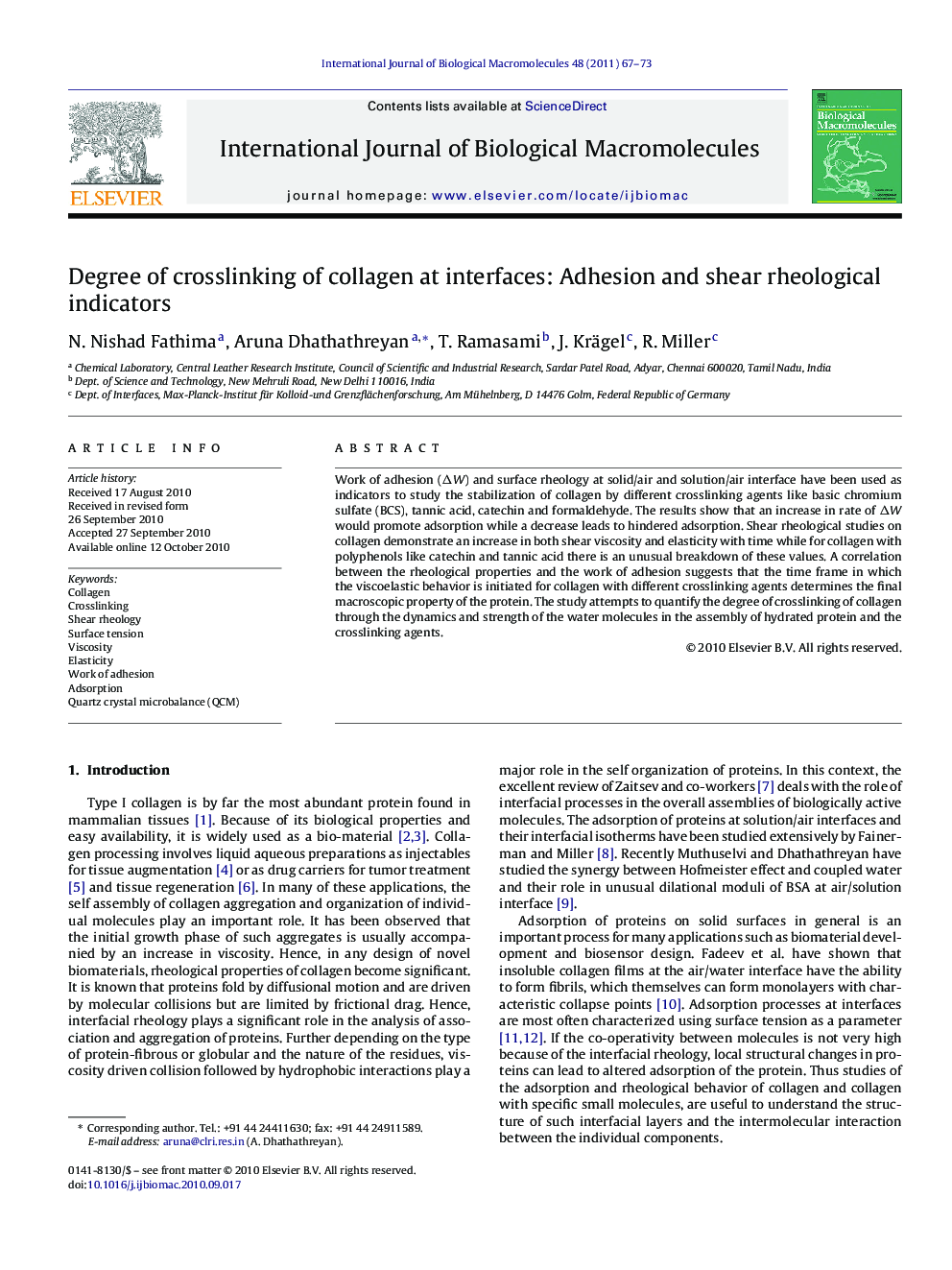| Article ID | Journal | Published Year | Pages | File Type |
|---|---|---|---|---|
| 1987288 | International Journal of Biological Macromolecules | 2011 | 7 Pages |
Work of adhesion (ΔW) and surface rheology at solid/air and solution/air interface have been used as indicators to study the stabilization of collagen by different crosslinking agents like basic chromium sulfate (BCS), tannic acid, catechin and formaldehyde. The results show that an increase in rate of ΔW would promote adsorption while a decrease leads to hindered adsorption. Shear rheological studies on collagen demonstrate an increase in both shear viscosity and elasticity with time while for collagen with polyphenols like catechin and tannic acid there is an unusual breakdown of these values. A correlation between the rheological properties and the work of adhesion suggests that the time frame in which the viscoelastic behavior is initiated for collagen with different crosslinking agents determines the final macroscopic property of the protein. The study attempts to quantify the degree of crosslinking of collagen through the dynamics and strength of the water molecules in the assembly of hydrated protein and the crosslinking agents.
